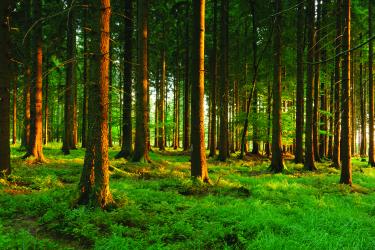Facts (and Myths) about Conservation Easements
If just reading the words “conservation easement” makes you nervous, you’re not alone. Misinformation about conservation agreements is widespread, and it makes many landowners reluctant to consider them.
But these fears aren’t founded in facts. Let’s separate the myths from the facts:
Myth: A conservation easement has something to do with government rights-of-way.
Fact: A conservation easement or conservation agreement is a voluntary conservation option. It sets up a legal arrangement between a landowner and a government agency or land trust that ensures the land will never be developed. The land remains the private property of the landowner, who gets to decide what kinds of activities will be allowed or disallowed on the property.
Myth: When you sign a conservation agreement, you give up all your rights to your property and can’t get them back.
Fact: Your conservation agreement is tailored specifically to your needs—in fact, you help design it. Its only purpose is to preserve the conservation values of your property, so you continue to control your land and any financial or other values you derive from it.
Myth: A conservation agreement means the government will take over your property and management decisions.
Fact: You and the conservation organization that holds the agreement work together to oversee your land, and you remain free to manage it for recreation, timber or other natural resources that benefit you personally or financially.
Myth: You don’t get a choice in land trust partners.
Fact: Your potential land trust partners know that choice is important to you, so nothing will be forced on you when entering a conservation agreement.
Myth: Conservation agreements reduce the value of your property and make it difficult for your children or grandchildren to profit from it.
Fact: A conservation agreement can significantly reduce the estate taxes your heirs will have to pay, making it easier and more affordable for them to keep the land intact.
The truth is that conservation agreements can protect the woods and wildlife you value while leaving a lasting legacy for future generations. They are legally binding, however, so you’ll want to take your time when considering whether an easement is a good option for your land.
The first step is getting to know the different types of conservation easements that are available to you, and how they could benefit your woods.
Next: The Benefits of a Conservation Easement
How can I get more tips?
It’s simple! Enter your email below.


